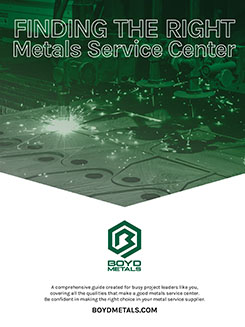FINDING THE RIGHT
Metals Service Center
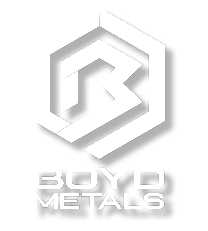
Advice to Management
Whether you are a project manager, estimator, or purchaser, there is one thing that holds true for nearly every construction project – at some point, you’re going to need the help of a metals service center.
Your project is important, and choosing the right metals service center to partner with sets the foundation for your project’s success. A good partner should be trustworthy, reliable, and know the ins and outs of the metals industry.
This comprehensive guide was created for busy project leaders like you and covers all the qualities that make a good metals service center. By the end of it, you will be confident in making the right choice in your metal service supplier.
After weeks of preparation, careful estimation, and a risky bid, ABC Construction has just been awarded a large project. The established company is eager to work on a project of this size, but they have one major problem – their primary vendor and longtime metals service center of choice is no longer in business.
While they have several smaller vendors that they use on a semi-regular basis, they are feeling the pressure to find the right metals service center; one that can meet all of their needs and ensure they complete the project in an impressive fashion.
Do They Have the Materials You Need?
As you know, every construction project is different. Some projects will be straightforward, while others will seem endlessly complex. Either way you cut it, simple or difficult, having a reliable metals service supplier is going to make the difference in the quality, consistency, and feasibility of your projects.
From the easily-accessible to the hard-to-find, all your projects will require their own unique materials and specifications, and this is where your vendor truly makes a difference.
Of course, any metals service center needs to provide the basics: bars, plates, beams, tubing, sheet, stainless, aluminum, etc. In fact, if your metals service center doesn’t consistently carry these items, it’s time for you to begin reconsidering your partnership. When your vendor doesn’t have the basic materials you need and you are spending your day hunting them down from multiple sources, it’s the project that is going to pay for it. That being said, your vendor should go further than covering just the basics for you.

Stocking a variety of materials is one thing, but it’s the little things in partnerships that truly make the difference. For example, if you are a loyal customer that frequently needs 3/8″ T316 cold drawn stainless steel hexes, it makes a big difference knowing that your vendor is going the extra mile to keep that stocked for you.

Ultimately, stocking and supplying the materials you need to accomplish your projects is the foundation of a good metals service center. So what kinds of metals should they be carrying?
In this section you’ll find the basic materials that everyone’s metals service center should carry and have better idea of what a reliable metals service supplier looks like.
STEEL
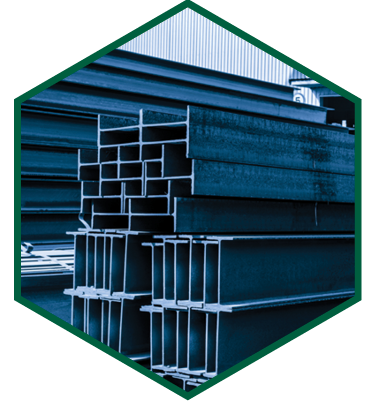
As one of the most utilized metals in the world, chances are that most of your projects require at least some form of steel. Since steel types fluctuate by application and project need, a reliable metal service center should be able to provide you with several different grades and varieties to meet your demands.
Each type of steel allows for different uses and applications and are broken down into four different groups by their chemical structure and physical properties. The most common types of steels that metal service centers provide include:
1. Carbon Steel: these steels account for 90% of total steel production. There are three subgroups that categorize carbon steels based on their carbon content:
- Low Carbon Steel
- Medium Carbon Steel
- High Carbon Steel
2. Alloy Steel: these steels are cost-effective and are often used in auto parts, mechanical work, power generators, and pipelines.
3. Stainless Steel: these steels are commonly found in home appliances, food processing equipment, and kitchen utensils because of their strength and resistance to both corrosion and high temperatures.
4. Tool Steel: these steels are a type of carbon alloy and are well-matched for tool manufacturing, such as hand tools or machine dies. Their hardness, resistance to abrasion, and ability to retain shape at increased temperatures are the key properties of this material.
Steel is a strong, durable, and versatile material, but it also has another key trait: sustainability. This makes choosing to use steel ideal because it lowers its cost and provides a strong, versatile resource that can be used long into the future.
ALUMINUM
Considered the most widely used non-ferrous metal in the world, aluminum is used practically everywhere you go. It’s production and application surpasses all other metals on the planet other than steel. So it’s safe to say that many of the projects you’ll be working on will require some amount of aluminum.
Extracting and producing the aluminum used in our society is a difficult, time-consuming and energy-intensive process. That is why the recycling process has become so important. Thankfully, recycling makes it easily recoverable.
During the aluminum alloying process, three different types of alloys can be produced depending on their attributes and what methods are used to treat them: commercially pure, heat-treatable, and non-heat-treatable. Each type of alloy is assigned a four-digit number to help classify it, where the first digit identifies a general class (or series).
1. Commercially Pure
- 1xxx Series
2. Heat Treatable
- 2xxx Series
- 6xxx Series
- 7xxx Series
3. Non-Heat Treatable
- 3xxx Series
- 4xxx Series
- 5xxx Series
Aluminum is abundant, inexpensive, lightweight, ductile, durable, malleable, conductive, and the list goes on. One of the biggest characteristics that sets aluminum apart though is its variability. Combining its sustainability with its versatility makes aluminum not only one the most important metals in the world, but also one of the most utilized across countless industries.
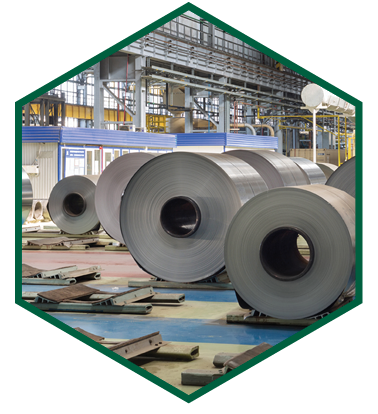
RED METALS
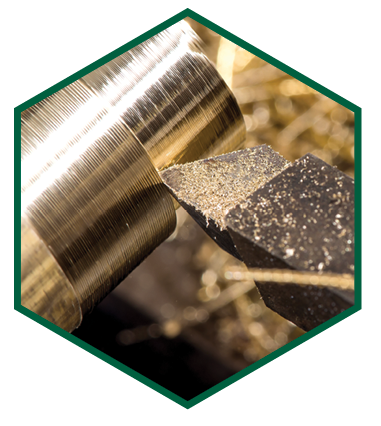
From construction and architecture to telecommunications and machinery, there are three metals that stand out due to their reddish hues. Red metals make up some of the most commonly used metals in the world. You probably know them by the names copper, brass, and bronze.
Once copper has been refined, it is then cast depending on its final application. Brass and bronze also have their own unique manufacturing processes that depend upon the desired shape and properties of the metals.
1. High Conductivity Copper: this type of copper is generally used for electrical applications such as wire and cable because of its excellent ductility and high electrical conductivity.
2. Deoxidized Copper: this type of copper is generally found in building construction, used in central heating systems, tubes for gas and water supply, and sheeting for roofs.
3. Copper Alloys: combining elements with copper allows for a broad range of different combinations that each have their own unique set of properties and applications.
Copper is recyclable without any loss of quality both from its raw state and from manufactured products and offers a wide spectrum of qualities for practical application across multiple industries. Combining sustainability with their versatility makes the red metals some of the most important and widely used metals in the world.
HARD-TO-FIND METALS
While most projects are going to primarily use the aforementioned materials, there are cases when you’ll need to obtain something a little more uncommon (i.e. inconel, kovar, titanium). While many metal service suppliers might not keep these rare metals in stock, a good one will have a way of sourcing them quickly.
But it doesn’t just stop at the types of material. Hard-to-find grades, specialty items, and other things that aren’t typically in stock need to be in reach.
Imagine you need a piece of 41/40 grade titanium that was heat-treated, annealed, quenched, tempered, and dipped in gold. Where would you even start to find it? While there is no vendor on the planet that is going to have that lying around, the idea is that your metal service supplier would take the leg work out of it and find that item for you.
Hard-to-find metals are going to find their way in your list of needed materials at some point. You will be doing yourself a favor by having a metals service center that has a track record of being able to find exotic alloys, hard-to-find grades, and specialty items.
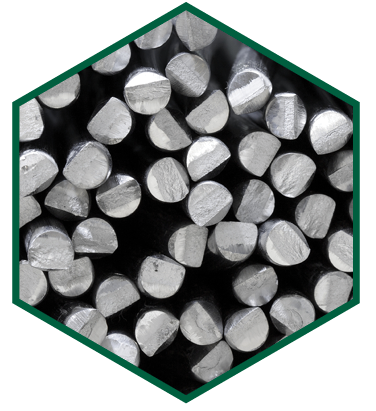
With a project of this scope, ABC Construction is going to need a lot of material in a variety of different types, shapes, and sizes. Without a metals service center that stocks a wide range of materials, they would be spread thin on time and cost trying to source what they need from multiple vendors.
Once they determine the stock items they need from available vendors, they are then faced with the second deciding factor: Processing.
Can They Process the Material?
Steel, aluminum, hard-to-find metals… While stocking or having quick access to these materials is the basis of a good metals service center, it’s also critical that when the materials arrive to your job site they’re ready to use.
It’s important that your metals service center has the ability to process the materials you order. Cutting, sawing, and shearing are some of the basic first-step processing services that are necessary to assure that you get what you need, exactly how you need it.
The best vendors will have several ways of processing materials, using newer technologies that allow for increased efficiency and precision.
Your project is important so it’s important that when you receive your materials the quality of the processing meets your expectations. If not, you face the possibility of having to reorder materials or having to find a way to make it work – costing you time and money.

A good metals service center knows this, and they will have the means to provide you with top-quality processing. For example, if you needed an 1-1/2″ plate cut into the shape of a company logo, you’re selling yourself short if your metals service center can’t provide you with that.

Again, every project is different, each requiring its own specific materials in a range of different shapes and sizes. In this section, we cover all the processing services that you want your metals service center to offer.
LASER CUTTING
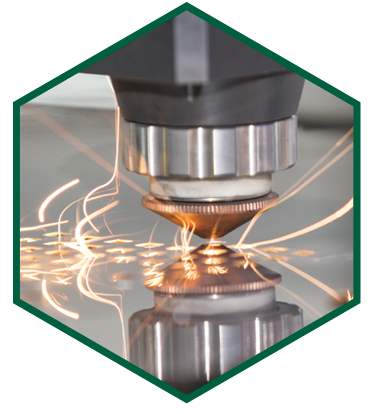
For most projects you are going to need to have some of your materials cut to size. In today’s industry, one of the preferred methods for doing this is laser cutting. As the name suggests, laser cutting involves using a focused beam of optical light to melt, burn, or vaporize metal materials. Combined with CNC, laser cutting machines allow for extremely precise and detailed cuts.
Laser cutting systems generally fall under three categories:
1. Gas Lasers: the oldest of the all the methods, this technique uses a carbon dioxide mixed laser and is best suited for cutting through non-metals or engraving metals.
2. Crystal Lasers: this method uses crystal mediums to allow for high-powered metal cutting capabilities. These however are typically more expensive and have the shortest life span.
3. Fiber Lasers: the newest of all cutting methods, fiber laser cutting produces stronger, more focused laser beams through fiber optics making it ideal for cutting heavier metal materials and lowering production costs.
Compared to other types of cutting, laser cutting offers several advantages including greater cutting precision, accuracy, and customization. One of the biggest advantages of laser cutting is its ability to produce high-quality cuts which generally do not require extensive secondary cleaning, treating, or finishing.
PLASMA CUTTING
In addition to laser cutting, plasma cutting is a popular method for processing metals. Plasma cutting is a process that utilizes a stream of plasma to easily cut through even the hardest of materials.
Nearly all plasma cutting systems fall under two categories: Conventional and Precision Plasma Systems.
1. Conventional Plasma Systems: Handheld systems fall in the conventional plasma system category. While these types are common, they are less precise than the other form of plasma cutting.
2. Precision Plasma Systems: These types of systems are CNC controlled and are designed to produce the most precise cuts achievable using plasma.
The most noteworthy differences between plasma cutting and other cutting methods are time and cost. Plasma is faster than other methods, particularly when dealing with thicker materials, and recent advances in plasma cutting technology are reducing the impact that plasma cutting has on your bottom line.
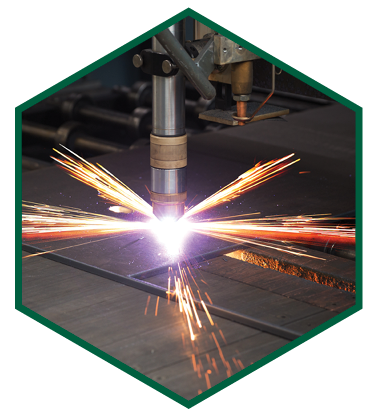
BRAKE PRESS
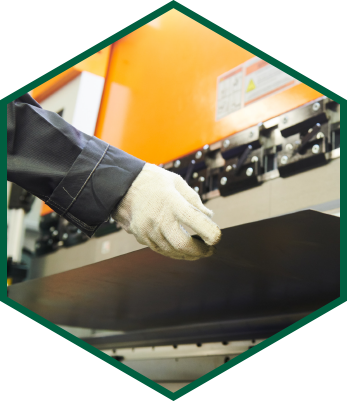
Outside of laser, plasma, and other fuel-based cutting systems, there are more traditional methods for processing materials.
One of these processes is known as brake forming. A brake press, also commonly known as a press brake, is a machine pressing tool used specifically to bend sheet or plate metal. It does so by using a punch and die that are set at a predetermined angle to bend or cut the metal into a variety of shapes and forms.
There are three common types of brake presses:
1) Manual Brake Press: also known as a sheet metal brake, it is the most common type of brake. Manual brake presses require you to manually adjust the bending dimensions and angle at each cut, and are best used for the production of set bending sizes and angles.
2) Hydraulic Brake Press: these brake presses utilize two hydraulic cylinders, allowing more control and consistent strokes. They are often classified by their movement, up acting or down acting, with each style having its own distinct advantages.
3) CNC Brake Press: this type of brake has the highest precision, utilizing computer technology to control accuracy and increase efficiency. When using CNC brake presses, data such as bending angle, plate thickness, width, and grade are entered into a controller by a trained operator and the brake easily handles the rest.
No matter the type of brake press used, a good metal service center will offer you a solution for your plate or sheet metal needs and help you determine what machine is best suited for your project.
SAWING/SHEARING
Outside of plasma and other fuel-based cutting systems, there are other common forms for processing materials.
Sawing and shearing are processes that over time have become far more efficient and practical on a larger scale.
But what does the technology behind these processes look like and how effective are they in getting a quality cut?
1. Sawing: band sawing is a process using a powered saw with a long, sharp blade consisting of a continuous band of toothed metal stretched between two or more wheels to cut material. This provides uniform cutting as a result of an evenly distributed tooth load. More sophisticated versions of this saw type are automated (via CNC) for high-volume cutting.
Even if you have your own in-house saw, a good metals service center will have equipment that can cut full mill bundles up to 24″ square. The alternative requires you having to split bundles to fit into your equipment, costing you time and money.
2. Shearing: the most common cutting processes are performed by applying a shearing force and are therefore usually referred to as custom shearing.
The machine used is called a hydraulic shear, power shear, or guillotine. For larger shears the moving blade may be set on an angle or “rocked” in order to shear the material progressively from one side to the other. Setting the blade on an angle decreases the amount of force required.
Automated (CNC) shearing offers tighter control in the cut, while manual shearing delivers top-quality workmanship with an experienced touch. A good metals service center will have both manual and CNC shearing capabilities.
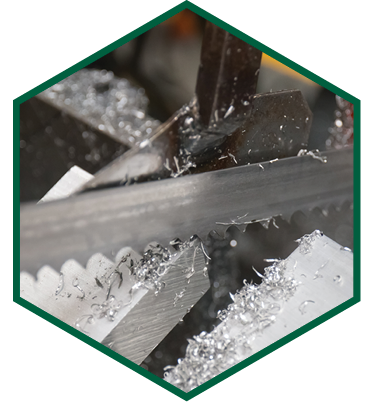
Having the necessary materials isn’t enough. ABC Construction needs a metals service center that has the means of processing their materials exactly the way that they need them. A vendor that doesn’t have the ability to cut and shear the material is simply out of the question.
But while these factors have helped to refine their options quite a bit, there are still a few other important considerations that will determine their final decision.
How Do They Get the Materials to You?
Now that we’ve covered the products and services that define a good metals service center, there is one final aspect that needs to be considered: logistics.
Every vendor should have the means of getting the products you order to your job site, but what qualities define and separate an average metals supplier from the best in the industry?

Things such as reliability, consistency, and efficiency can really only be measured by the testimony of others and firsthand experience with the company. But there are other factors that can give you an idea of how easy it will be to get the things you need when you need them.

Proximity will have a big effect on the wait time for your deliveries. One of the best ways to get over this hurdle is to work with a vendor that has multiple locations. Having multiple locations increases the chances that, no matter where your project is, there will be a location near you that can deliver what you need in a timely manner.
Things such as same-day or next-day delivery make a huge difference in the overall ease of a project’s completion and ensure that your project stays on schedule. Since all projects have tight deadlines, the faster they can get you the materials you need, the faster you can get the work done.
With this third and final consideration in place, you are now ready to really consider the metals suppliers you want to do business with and the ones are better left behind.
While location doesn’t determine the quality of the service ABC Construction will receive, it will definitely play a role in the reliability and convenience ABC Construction is seeking in a metals service center. That’s why they are looking for a vendor with multiple locations near the areas they most commonly work.
It’s important they receive quick delivery when they need materials. With this in mind, ABC Construction has all the information they need to make a final decision.
Get to Work!
Now that you know what products a great metals service center should carry, the services they should cover, and the important role their logistics play, the next steps are pretty clear:
- Hire someone that meets the specs
- Get to work!
By understanding what makes a good metals service center, you can now hire the best fit for your company, and by doing so, stop stressing about getting the things you need and focus on doing your best work.
While having the right metals service center is just one step in a long process of a completing a project, it’s a very important step that shouldn’t be taken lightly.
We hope this guide to finding the right metals service center has helped you get a better understanding of what to look for and provides direction for future partnerships.
With the right metal service center in place,
ABC Construction will be able to get what they need,
how they need it, when they need it. Though this is just the
beginning stages of their project, they’ve overcome one of their
biggest obstacles and have laid the groundwork for their project’s success.
Like ABC Construction, taking the time to properly assess your project needs and finding the
right metals service center for the job will set the foundation for your next project’s success.
Download the full guide as a free PDF!
